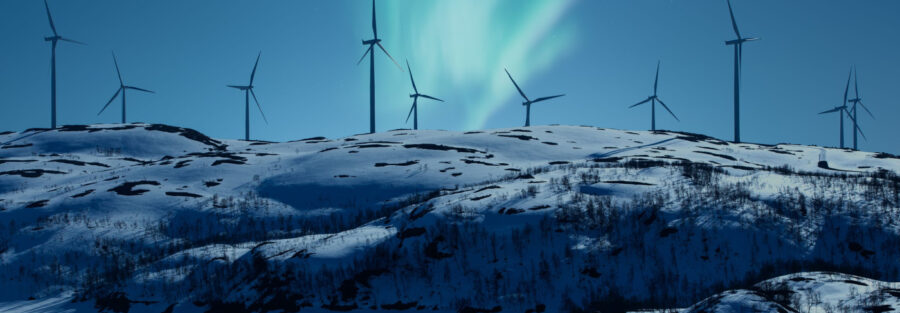How the ESG* Analyst should think – Dilemmas in the Nordic utilities sector
We have just finalised our ESG sector report for Nordic Utilities including Independent Power Producers. When conducting ESG research for a sector in a concentrated way, it is easier to see the typical risks, challenges and opportunities in the ESG dimensions.
As ESG analysts, we are often meeting dilemmas and uncertainties in our research and assessment of risk. What is good practice in the sector? What is not good practice? Bad practice can collectively in a sector hide away ESG risks and it is our job to dig these up. In the following, the non-reporting of GHG emissions from most of the companies incinerating household waste is one.
To fall in the dilemma category, it requires that we must take a stance. Is it a risk? Is it an opportunity? How serious is it? In the following dilemmas that we have met in the ESG sector report for the Nordic utility sector, we will let you know how we consider it.
Power plants’ reporting of impact on biodiversity – Too simple
The biodiversity impact is not the same for different companies in this report. For the solar power plants, most of the negative biodiversity impact is in the supply chain, but not only. It depends on where the solar power plants are placed.
For the wind power plants, a visible negative biodiversity impact is birds being injured and vulnerable areas in nature being replaced by roads, parking spots and wind turbine bases. The supply chain is not without biodiversity impact either.
Hydro power companies tend to focus on making it possible for fish to pass dams and other installations, while being silent on other negative biodiversity impact they may have or have had as many of the plants were built in a time when nobody considered biodiversity. I did not do it, but I profit from it…
Overall, companies are rather shallow with regards to communication and action in this space and tend to respect the national legislation and regulation. None of the companies in the report has a proper biodiversity policy. It is confusing to see some are mapping out the species they are impacting negatively, but without any further explanation of how they plan to address this and their targets.
Hydro power plants and dry rivers
Despite their biodiversity narratives, we have seen very surprising behaviour this year in Norway, when water dams were too low on water levels and the eagerness to fill them up was making some companies letting rivers go dry with serious negative impact on the local biodiversity: https://www.nrk.no/klima/norge-ma-forklare-seg-om-vannkraft-og-laks-1.15971228
We think it is important to be transparent about all biodiversity impacts, even when it is uncomfortable to say power production has priority over biodiversity, but when companies pretend it may hit back. Stakeholder focus is increasing on biodiversity and therefore the materiality of biodiversity is increasing. Remember, ESG materiality is not constant.
Electricity grid companies – Grid losses to be counted as consumption?
How to deal with the grid losses? Some consider this as own consumption of electricity and cancel or buys, if they are not power producers, Guarantees of Origins (GoOs). From a market-based perspective this then results in no GHG emissions, and it would hinder GoOs to be sold for electricity that never reach the market.
We think this is a very clean approach and would like to see all do this.
District heating – GHG emissions scope not complete
GHG emissions should be published even for biofuel and household waste incineration. Not all do this. It would also make sense to state the percentage of biofuel that is cultivated on arable land for the purpose and the percentage being waste biofuel (not cultivated for the purpose).
Why are district heating activities based on household waste incineration sometimes not included? Interestingly, the companies reporting GHG emissions from district heating are the ones using biofuel, while those using residual household waste do not. Several companies say they do not report GHG for household waste “according to established reporting practice for the district heating industry”. This does not make sense anymore; all energy sources must be included in GHG emission reporting.
Some large district heating plants are buying extra household waste to keep the power plant running, and even at times, importing it from other countries and shipped by sea. It is not really giving any incentives to reduce household waste.
We think that all GHG emissions from all sources of energy for district heating must be published including for incineration of household waste. And the “green” communication should be toned down to appropriate levels?
Heavier technical plant equipment – Supply chain obscurity
Literally, no company talks about their supply chain in detail, where who and how. On the heavy equipment side, we are talking about hydro turbines, copper cables, transformation stations, wind turbines and photovoltaic equipment for instance. We suppose international suppliers are present in this segment and that an important part of the supply chain is in other parts of the world. For heavy power plant equipment, workers and contractors from other countries and regions of the world may be present to install the equipment. That requires scrutiny on the environmental side and the social side. Here we expect the companies to increase transparency.
We think all companies should publish from where the heavy equipment is being produced, raw materials and energy consumed and impact on nature and humans the production process had. It will also be useful for environmental Life Cycle Analysis.
Construction of new plants – No transparency on impact
Few or none of the companies we have been ESG researching in the sector do report the environmental and social impact of construction projects for new power plant sites or new electricity grids. This gives the impression that the companies’ contribution is only to replace fossil energy sources, something they communicate in a very rich manner about.
We think that all companies should keep an accounting of all environmental and social impact from construction projects and be transparent about it. It will also be useful for Life Cycle Analysis.
Transport of electricity – Is replacement of creosote poles net positive?
A new theme in the grid activities is replacement of creosote impregnated poles. Testing with poles of different material is ongoing and the advancement here is very different among the grid companies. The reason given is that the tar in the creosote is having a negative impact on the nature, both in production and where the poles are used. The new material tested is Aluminium.
A question we rise is what they will do with the old creosote poles? Will they be taken care of as hazardous waste, or will they be “sold”, and all worries are gone once out of the door. None of the grid companies have given any details on this. We know that historically old creosote wood railroad ties have ended in peoples’ gardens as stairs for instance and moving creosote components or poles there is not solving the problem.
We think companies doing the “good” action to replace these with Aluminium should present the whole calculus including the E and S cost of producing and transporting the Aluminium Poles and the disposal process of the creosote poles.
Conclusion – How the ESG* Analyst should think – Nordic utilities
In corporate sustainability reporting, we meet a lot of communication on the good actions and positive impacts companies have. It is positivism and marketing. Fine, that is both normal and permitted, but not making at the same time proper accounting of the negative impact of the same actions is not good. We do not think the acceptance for this kind of pretending will last for long. We strongly recommend the companies to have a more balanced attitude and communication in their sustainability reporting.
Many of the dilemmas in this article is about the negative impact the companies are causing by their activities, both directly and indirectly through for instance the supply chain. When assessing ESG risk we work with the double materiality principle, the negative impact a company has on the world becomes an ESG risk if it can make stakeholders change their attitude to the company. A change in attitude can lead to loss of sales, loss of permits to operate, and tighter and costlier regulation. These are only some examples.
As ESG analysts, we take stance in these dilemmas or uncertainties really for many of them. As our work is about risk assessment, lack of transparency can hide risk and we count them as such.
The full Nordic Utilities ESG sector report can be found here: https://sustainax.docsend.com/view/xtpbfgkgsvh958gg
*Environmental, Social and Governance



